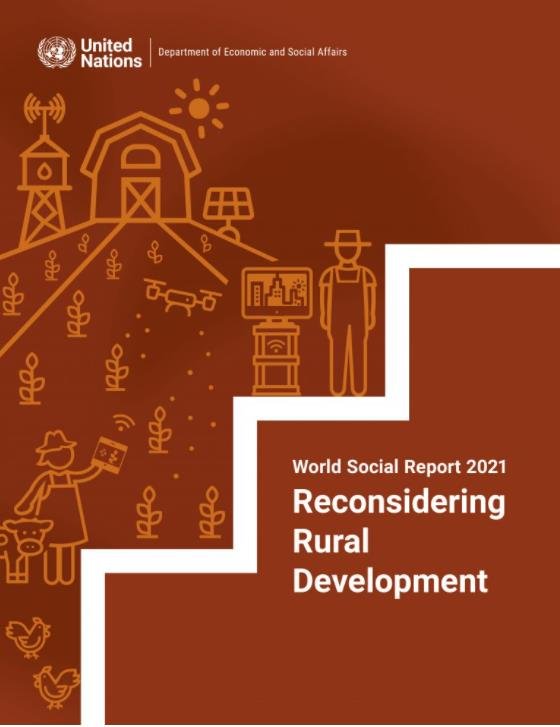- Share this article
- Subscribe to our newsletter
World Social Report 2021: Reconsidering Rural Development
This year’s World Social Report, entitled Reconsidering Rural Development, examines the urban-rural divide and offers solutions to ensure that no village is left behind. It was launched in mid-May 2021 by the United Nations Department of Economic and Social Affairs (UNDESA).
The report presents findings on how rural development can serve as a powerful driving force to achieve sustainable development. It calls for moving rural development to the centre of attention; for ending the rural-urban divide and inequality within rural areas; and for achieving rural development while preserving the environment.
Extending urban benefits to rural areas
To achieve the 2030 Agenda for Sustainable Development, the international community needs to urgently reconsider rural development. New approaches made possible through improved access and Internet connectivity can raise the standard of living for approximately 3.4 billion people in rural areas, without them having to migrate to cities, the report states. It calls for improving the lives of people where they are by improving rural standards of living.
Called “In Situ Urbanization,” the approach seeks to ensure that the rural population is able to enjoy the same standard of living as the urban population, without the negative side-effects of unsustainable urbanisation. In Sri Lanka, Japan and China, the report found examples where improved access to education and health care, increased investment in rural infrastructure and reduced income disparity between rural and urban areas have led to better living conditions for rural populations.
Reducing rural livelihoods’ vulnerability to climate change
According to the report, changing natural habitats to agricultural land has led to 60-70 per cent of total biodiversity loss; and the loss of forests and wilderness is credited with the rise of zoonotic diseases like COVID-19. The Intergovernmental Panel on Climate Change states that approximately 31 per cent of global greenhouse gas emissions is directly related to agriculture and land-use changes. Policies need to be put in place to build resilience and reduce the vulnerability of rural livelihoods to climate change. The report recommends taking steps to develop crop varieties that are less land-intensive, practicing mixed farming and switching to the circular economy.
Additionally, a water deficit of about 30 per cent is expected by 2030 and nearly 95 per cent of the Earth’s land areas could become degraded by 2050 if current patterns of rural development continue. Measures that promote the sustainable use of resources as well as food security must be considered.
Boosting the agricultural sector
Countries that are home to at least 501 million agricultural workers are at risk of not achieving the Sustainable Development Goals (SDGs) target of doubling agricultural productivity and incomes of small-scale farmers by 2030. The report acknowledges that more action is needed to boost agricultural productivity by improving infrastructure, using appropriate technology, providing incentives and increasing investments. It is also important to focus on agricultural models that are country specific and are geared towards supporting smallholders. Diversification is also key to rural transformation. Expanding non-farm activities — a potential source of income for young people — should be part of the new strategies.
(UNDESA/ile)
Read more and download the World Social Report 2021: Reconsidering Rural Development at UNDESA





Add a comment
Be the First to Comment